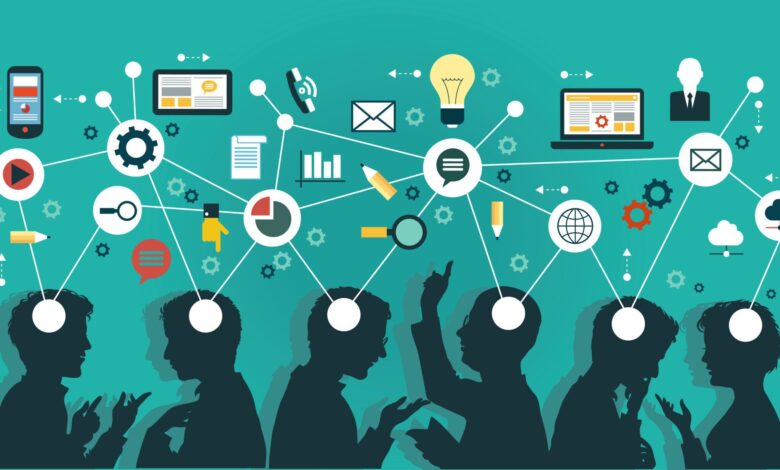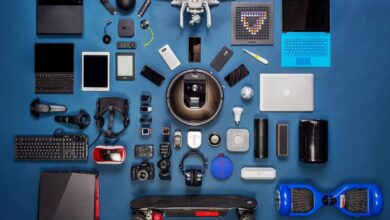How Golden Technologies is Revolutionizing Mobility for Seniors

Golden technologies refer to any type of technological innovation designed to improve the quality of life for older adults. This can encompass a wide range of products and services aimed at helping seniors live independently, remain engaged with society, monitor their health, stay safe, and enjoy an overall high quality of life.
The term itself originated in the late 20th century as new developments in science and technology converged with a rapidly aging population across developed countries. With people living longer lifespans, there was an increasing societal need for age-friendly solutions that could empower seniors rather than isolate them. The idea of “golden technologies” was initially coined in Japan, which faced a swiftly graying demographic. However, the concept soon spread worldwide.
Today, golden technologies play a pivotal role in enabling active aging. Key areas of innovation include accessible housing, transportation and mobility aids, sensory assistance devices, therapeutic technologies, remote health monitoring systems, social engagement platforms, and more. Such solutions allow seniors to retain independence and social connections while managing age-related conditions and disabilities. With many countries now facing a “silver tsunami” of elderly citizens, golden technologies are becoming increasingly vital for supporting both aging individuals and overburdened healthcare systems. Their development and adoption continue to grow in importance.
Key Innovations
Golden technology companies are leading the way in developing innovative products and services to improve the quality of life for older adults. Some key innovations in recent years include:
Touchscreen Technology
Touchscreens are becoming more prevalent in products for older adults. Large touchscreen devices and interfaces allow for easier interaction without complex buttons or controls. Touchscreens are being incorporated into senior-focused tablets, smartphones, remote controls, and even refrigerators or appliances to simplify use.
Digital Health
Wearable devices and digital health apps are enabling seniors to better track fitness, and medical conditions, and share health stats with providers. Digital health technologies include fitness trackers, blood pressure/heart rate monitors, blood glucose meters, pill dispensers, and more. These tools promote active health management.
Telehealth
Telehealth and telemedicine technology allow patients to connect with doctors online. Older adults can access medical care while remaining at home. Remote health monitoring and virtual doctor visits enhance access and convenience.
Robotics
Service robots are assisting older adults with tasks like cleaning, retrieval of household objects, safety monitoring, companionship, and more. Robots are being designed with seniors in mind to provide support with limited mobility, memory loss, or other age-related conditions.
Aging Population Trends
The world is experiencing a dramatic demographic shift, with populations aging rapidly across the globe. Life expectancy has increased significantly over the past century due to improvements in healthcare, nutrition, sanitation, and living standards. This results in larger older populations that live longer than previous generations.
In most developed countries, people over 60 years old already comprise over 20% of the population. This percentage is projected to grow in the coming decades. Developing countries are also seeing their older populations grow at unprecedented rates.
These global aging trends lead to various economic, social, and health challenges. Older people are more prone to chronic diseases, disabilities, and loss of mobility. Providing healthcare, long-term care, and social services for larger aged populations strains national budgets. With people living longer and having fewer children, the old-age dependency ratio rises, meaning fewer working-age people to support the elderly.
Maintaining health, independence, and quality of life for aging populations is crucial. Advances in technology, medicine, and infrastructure planning can help address the needs of the elderly. However, societies must adapt on many levels to the social and economic impacts of global population aging.
Accessibility
As the global population ages, accessibility becomes an increasingly important consideration in product design and development. Companies like Golden Technologies are focused on enhancing accessibility and improving the quality of life for older adults and people with disabilities or limited mobility.
Adaptive technologies and inclusive design principles allow people to maintain independence and engage with products or environments that might otherwise be physically inaccessible. Some examples include:
- Lever-style handles instead of knobs on doors, cabinets, and appliances
- Low step thresholds on showers or bathtubs
- Higher toilets and ADA-compliant grab bars
Control buttons and interfaces placed at an easy-to-reach height
- Non-slip flooring
- Ramps instead of stairs
- Lifts and elevators
- Doors, hallways, and doorways wide enough for wheelchairs
- Products and packaging with easy-grip handles
- Large print labels and instructions
- Voice assistants and screen readers
Thoughtful design allows people of all ages and mobility levels to live independently and engage with products or spaces safely and comfortably. Accessibility features help people retain their autonomy and freedom. As an ethical obligation and good business practice, organizations should consider accessibility from the start rather than as an afterthought. Designing with inclusion and accessibility principles in mind allows companies to serve more customers and have a broader societal impact.
Independent Living
One of the key goals of innovations in technology for seniors is to allow older adults to continue living independently in their own homes for as long as possible. New tools and services are emerging that aim to make daily tasks easier, improve home safety, and provide monitoring and emergency response when needed.
Daily Task Assistance
Technology can assist with routine activities that may become difficult with age. Voice assistants like Amazon Alexa allow seniors to control their home environment hands-free, turning on lights or adjusting the thermostat simply by speaking. Reminder apps and medication trackers help older adults stay on schedule with medications, doctor’s appointments, and other events. Smart home devices like automatic pet feeders ensure daily pet care tasks are completed.
Home Safety
Specialized home safety tech for seniors focuses on preventing falls, monitoring activity levels to catch emerging health issues early, and alerting caregivers or emergency services if needed. Sensors placed in key areas can detect motion and monitor for irregular activity patterns that may signal an emergency. Fall detection devices worn as pendants or watches trigger an alert if a fall is detected. Home security cameras allow family members to visually check in, while respecting privacy since they are not actively monitored full-time.
Emergency Response
Personal emergency response systems (PERS) allow seniors to call for help with the push of a button, giving them peace of mind that even if they are home alone, support is there when needed. These systems often include fall detection as well. With advances in wearable medical devices and remote patient monitoring, some systems can even begin assessing vital signs and summon medical assistance at the first sign of distress before an emergency occurs. This allows successful aging in place while ensuring safety.
Healthcare
Many golden technology innovations are focused on improving healthcare for older adults. Remote patient monitoring allows doctors to track their patients’ vital signs and symptoms from afar. Devices like blood pressure cuffs and glucose monitors collect data at home that is automatically transmitted to healthcare providers. This allows doctors to detect concerning changes and intervene earlier.
Remote monitoring has been shown to improve health outcomes for patients with chronic conditions like diabetes, heart failure, and COPD. It reduces hospital readmissions and ER visits. Patients also report feeling more connected to their care team and empowered in managing their health. This is critical for older adults who often struggle with transportation to frequent in-person appointments.
Healthcare Overview
Telehealth virtual visits make care more convenient and accessible too. Seniors can connect with their doctor online through a phone or tablet without leaving home. The availability of telehealth services skyrocketed during the COVID-19 pandemic. It became a lifeline for high-risk seniors needing to minimize virus exposure. Many experts expect telehealth to remain popular given the benefits of reduced travel and increased flexibility.
In-home technologies are making senior care safer as well. Sensors can detect falls or monitor activity levels. Alert systems allow older adults to call for help with the push of a button. Smart technologies can even remind seniors to take their medications, stay hydrated, or perform recommended exercises. All of these innovations have the potential to extend safe, independent living.
Most importantly, golden technologies applied thoughtfully can provide healthcare solutions that improve the quality of life for seniors. They facilitate aging with comfort, dignity, and autonomy. However, we must ensure access to these technologies in an ethical manner. Solutions should empower older adults rather than diminish human connections in healthcare. With careful implementation, healthcare technologies can reduce costs while truly supporting the well-being of aging populations.
Ethical Considerations
As technology advances continue to shape and improve the lives of older adults, it also raises important ethical considerations that must be addressed.
Privacy Concerns
Many new technologies involve collecting personal data and monitoring user behaviors. This raises understandable concerns about privacy and data security. Companies creating products for seniors have an obligation to be transparent about what data is collected and how it is used. Obtaining informed consent and allowing user control over data sharing is important.
Digital Divide
While innovative tech can empower older adults, there is also the risk of excluding those who cannot afford or access it. With nearly half of those over 65 considered “digitally illiterate”, a concerted effort must be made to improve digital literacy and access among the elderly. Free training programs, public access points, and affordable equipment/services can help bridge this gap.
Cost Barriers
The high costs of new technologies and services can make them prohibitive for those on fixed incomes. Products tailored for seniors should aim for mainstream affordability, with discounts or subsidies offered when possible. Otherwise, only more affluent seniors will benefit, while most will be left behind. Ethical companies should ensure their innovations empower people equally, regardless of economic status.
The Future
The future of golden technologies looks bright as innovations in AI, automation, preventative health, exoskeletons, robotics, and brain-computer interfaces continue to advance.
AI and Automation
Artificial intelligence and automation will likely play a major role in assisting older adults. AI companions may provide social stimulation and help combat loneliness. Smart home devices can automate tasks and reminders, like controlling lights, temperature, and appliances or prompting medication intake. Autonomous vehicles could enable mobility. AI assistants may even help monitor health and safety.
Preventative Health
New techniques in preventative health aim to help people stay healthier longer. Advances in genomics, biomarkers, and precision medicine may allow for earlier disease detection and more personalized care. Wearable sensors can continuously monitor vitals and watch for early signs of illness. Improved diagnostics, screening, and risk assessment may help mitigate age-related conditions.
Exoskeletons and Robotics
Exoskeletons and robotic devices have the potential to aid with mobility, strength, and rehabilitation. Powered exoskeletons could help users walk faster with less effort. Robotic gloves and supports may assist with grasping and lifting. Therapeutic robots can guide rehabilitation exercises. Such technologies could help older adults retain independence and physical ability.
Brain-Computer Interfaces
Emerging brain-computer interface systems allow direct communication between the brain and external devices. Non-invasive BCIs using EEG sensors have enabled people with paralysis to control prosthetics or type with their thoughts. In the future, similar interfaces could help those with mobility limitations, speech impairments, or sensory deficits to better interact with technology and their environments.
Key Players
The golden technologies industry has seen the rise of several key players leading innovation and investment.
Leading Companies
Some of the most influential companies in golden technologies include:
- Toyota Research Institute – TRI is working on various assistive technologies for older adults including robotics, autonomous vehicles, AI, and more. They aim to help improve mobility and allow older adults to live independently longer.
- Apple – Apple has added many accessibility features to iOS and their devices to help people with disabilities. This includes options for vision, hearing, mobility, and learning challenges. Their work helps set the standard for accessible consumer tech.
- Amazon – Amazon’s Alexa virtual assistant is used in many smart home devices today. Alexa helps by controlling products, answering questions, setting reminders, and more through voice commands. This hands-free operation is helpful for those with limited mobility.
- Samsung – Samsung has created technology like SmartThings, which allows people to control aspects of their home through an app. This can turn lights on/off, adjust temperature, lock doors, and more based on customized routines.
Research Institutions
Some top research institutions advancing golden technologies include:
- MIT AgeLab – Studies how technology can improve life for older adults. Areas of focus include health tech, autonomous vehicles, robotics, and more.
- Stanford Center on Longevity – Conducts research on designing products and services for our aging world. The center has collaborated with companies like Apple.
- AARP Innovation Labs – AARP’s labs explore how technology can be leveraged to improve the lives of older Americans. Their work spans robotics, wearables, smart home tech, and more.
Investors and Funding
Some of the major investors and funds backing golden technologies include:
- Aging 2.0 – This group runs accelerators and makes seed investments in startups focused on aging and senior care innovation.
- Primetime Partners – VC firm that invests in health tech for older adults. The portfolio includes tech for in-home care, brain health, and chronic disease management.
- Ziegler Link-Age Fund – Provides investment capital to emerging companies developing tech solutions for aging services.
The combination of leading corporations, research labs, and dedicated investors has created a thriving ecosystem of golden technologies development. As global demographics continue to shift, we can expect ongoing expansion in this important industry.
Conclusion
Golden technologies have revolutionized independent living for older adults through continued innovation and creative solutions that aim to enhance the quality of life. As the global population ages, the demand for supportive technologies will only increase. Companies in this space have a responsibility to ensure accessibility and approach innovations ethically.
Key innovations covered in this article, such as fall detection systems, medication management tools, and remotely accessible home environments, have already had immense positive impact. However, complacency cannot set in. More work remains to make homes safer, healthcare is more affordable and efficient, daily tasks less burdensome, and overall well-being higher. Seemingly small enhancements can make dramatic differences in older adults’ ability to live vibrant, engaged, autonomous lives.
The promise of golden technologies also extends into social connection, cognitive health, transportation, automation, and more. While aging brings intrinsic challenges, innovative solutions can help older adults live life on their own terms. Continued progress will rely on public and private commitment to funding and support. By upholding the human dignity and worth of all people regardless of age or ability, society can ensure the golden years truly shine.





